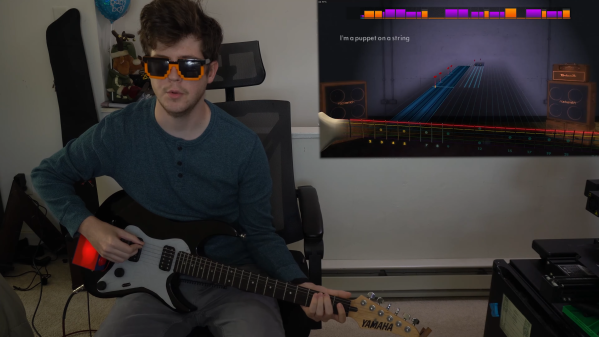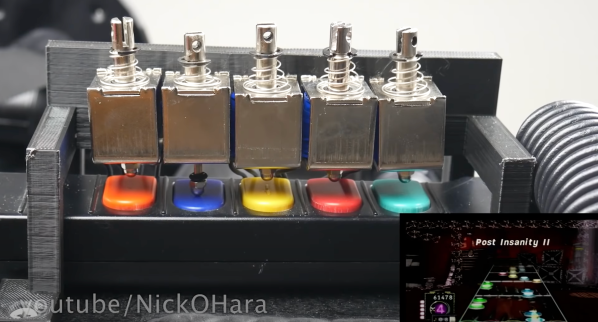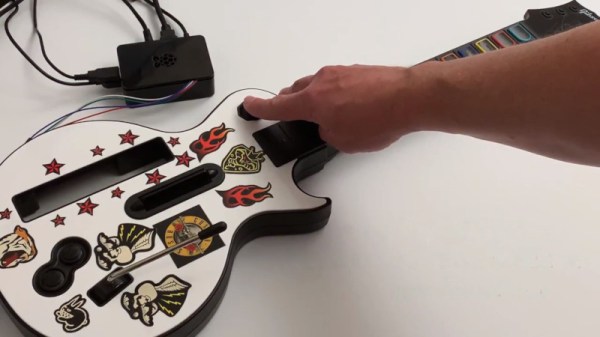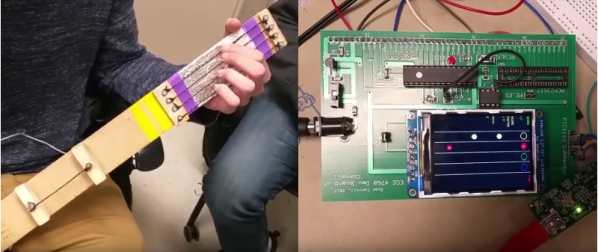Guitar Hero was all the rage for a few years, before the entire world apparently got sick of it overnight. Some diehards still remember the charms of rhythm games, though. Among them you might count [Joseph Valenti] and [Daniel Rodriguez], who built a Keyboard Hero game for their ECE 4760 class at Cornell.
Keyboard Hero differs quite fundamentally from Guitar Hero in one major way. Rather than having the player tackle a preset series of “notes,” the buttons to press are instead procedurally generated by the game based on incoming audio input. It only works with simple single-instrument piano music, but it does indeed work. A Raspberry Pi Pico is charged with analyzing incoming audio and assigning the proper notes. Another Pi Pico generates the VGA video output with the game graphics, which is kept in sync with the audio pumped out from the first Pico so the user can play the notes in time with the music. Rather than a guitar controller, Keyboard Hero instead relies on five plastic buttons assembled on a piece of wood. It works.
It’s obviously not as refined as the game that inspired it, but the procedural generation of “notes” reminds us of old-school rhythm game Audiosurf. Video after the break.
Continue reading “Keyboard Hero: A Barebones Alternative To The Guitar Version”

















